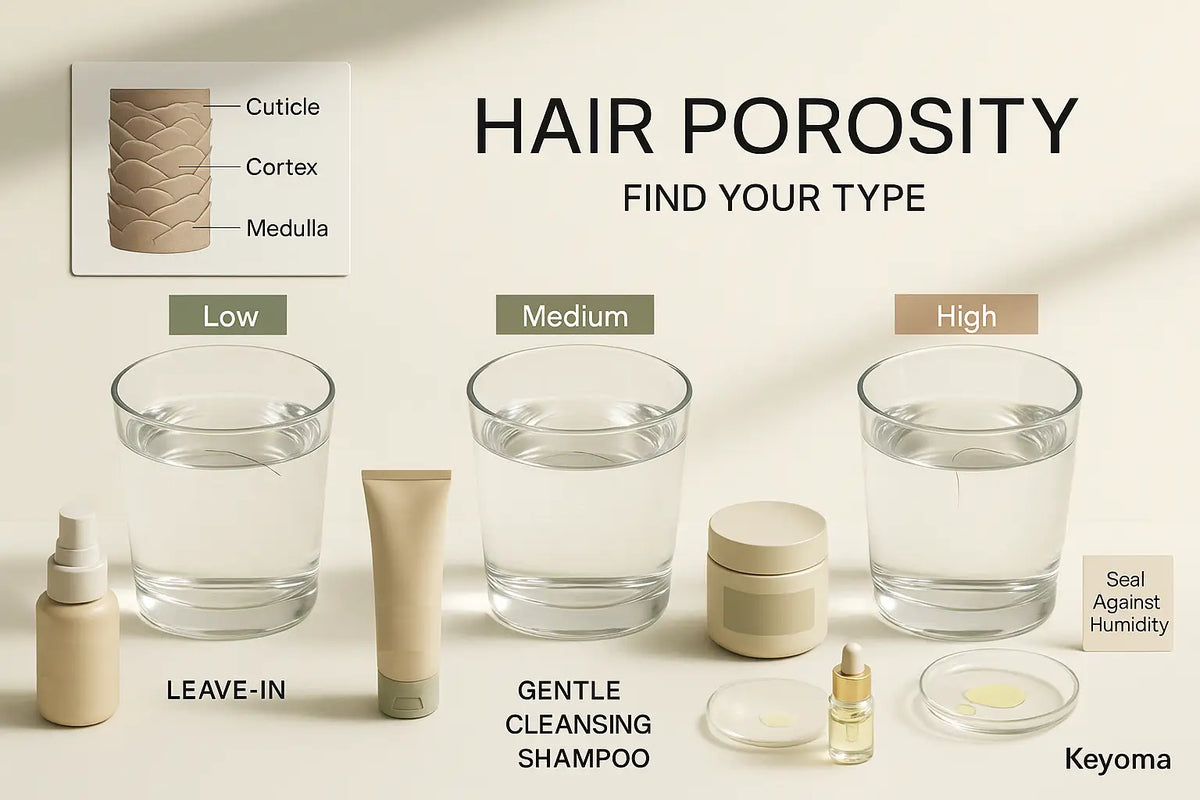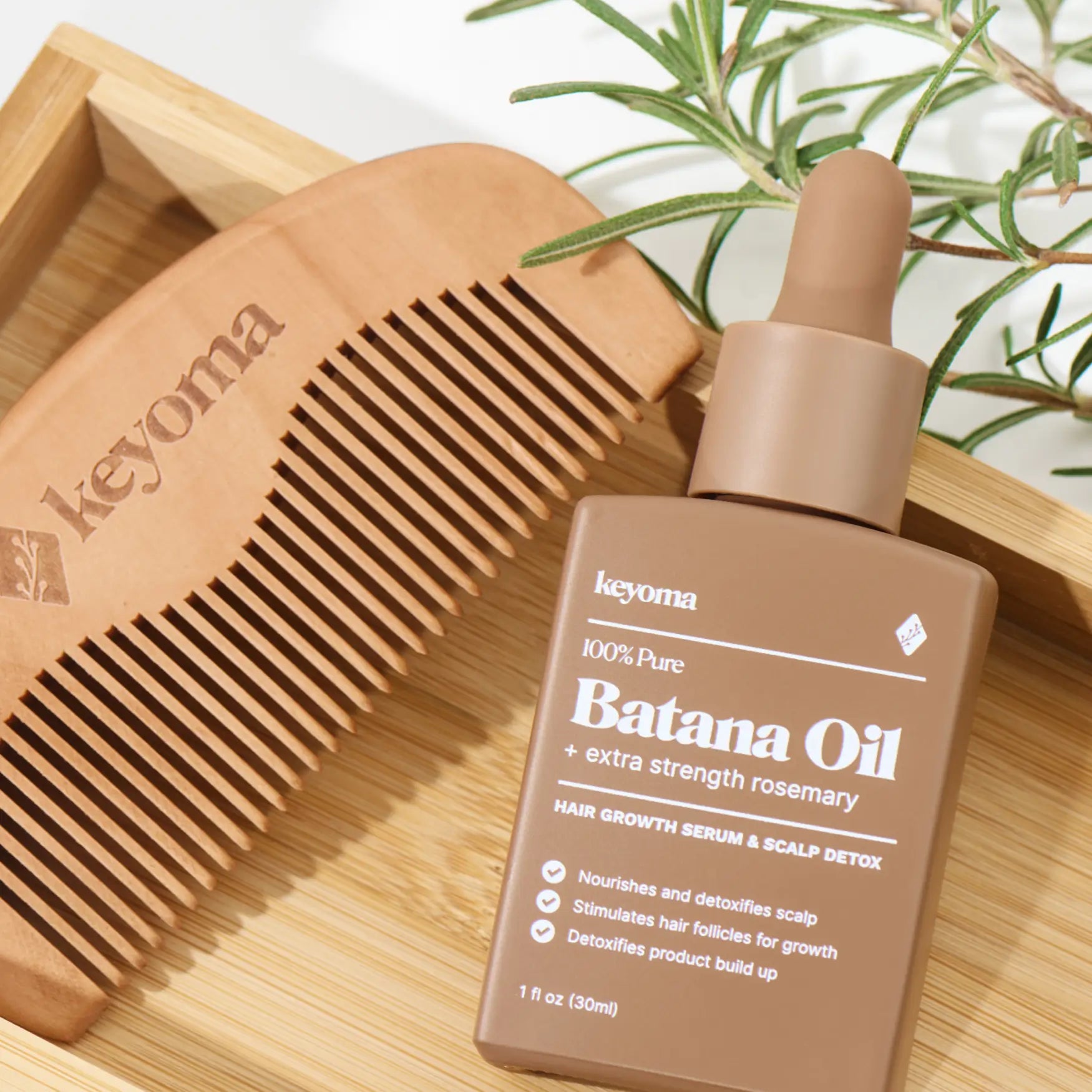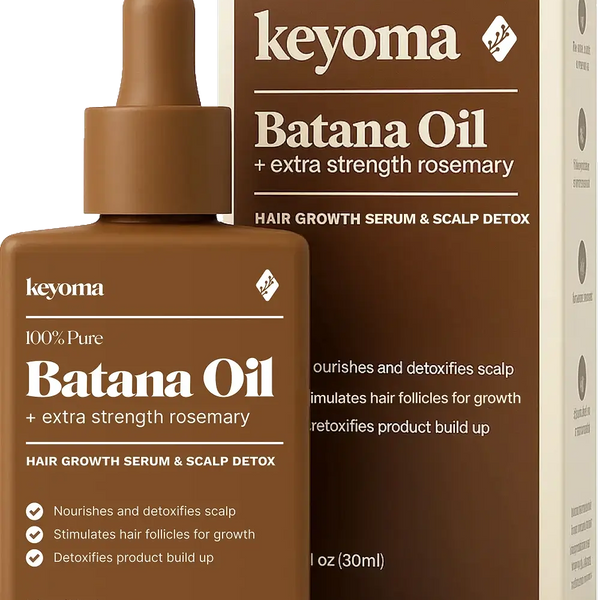In this article
Hair porosity is how easily your hair absorbs and holds moisture. It affects how water and oils move through the outer layer of your hair, called the cuticle.
People usually describe porosity in three groups:
-
Low porosity: Cuticles sit tightly packed together.
-
Medium porosity: Cuticles are less tightly closed.
-
High porosity: Cuticles have wider gaps between them.
Below, you’ll see what shapes porosity, how to figure out your type, and how to care for your hair based on that result.
Key Takeaways
-
Hair porosity describes moisture absorption and retention, affecting product penetration, hydration, and manageability.
-
Heat, UV, and chemical processing can increase porosity; limit exposure and use protective measures.
-
Low porosity resists absorption; deep conditioners and occasional low-sulfate shampoo can improve hydration.
-
High porosity absorbs quickly yet loses moisture; protein treatments and anti-humectants can reduce frizz.
What does hair porosity mean?
To grasp porosity, it helps to know hair structure. Each strand has three layers:
-
The cuticle: a tough outer shell made of overlapping scales, similar to roof shingles.
-
The cortex: the thick middle layer with fibrous proteins and the pigment that gives hair its color.
-
The medulla: the soft core at the center of the shaft.
For your hair to stay hydrated, water, oils, and moisturizers need to pass through the cuticle to reach the cortex.
If the cuticles are packed too tightly, water and oils don’t enter easily. You may struggle to get enough moisture in.
If the cuticles are too open, your hair loses moisture quickly and has a harder time staying hydrated.
Types of Hair Porosity
Porosity falls into low, medium, or high. Each behaves differently, and each pairs best with certain products.

High-Porosity Hair Traits
Highly porous hair often has gaps or holes in the cuticle from wear or damage. It soaks up moisture fast but loses it just as quickly, which leaves you prone to dryness, brittleness, and frizz.
Medium-Porosity Hair Traits
Medium porosity usually has a slightly raised cuticle that allows moderate moisture in and out. You’ll likely notice styles hold fairly well and your hair tolerates heat or color better than most.
Low-Porosity Hair Traits
Low porosity hair has a tightly sealed cuticle layer. That compact surface can look smooth and shiny, but it also makes it harder for water and products to get in. You may see buildup and find it tough to hydrate well.
What Affects Hair Porosity
Genetics and aging both play roles in how porous your hair is, but daily care choices matter, too.
In the International Journal of Trichology, authors note that all hair has some porosity, and that damage raises it further. Heat, UV light, and chemical services like bleaching can increase porosity, as described in the Journal of Cosmetic Science.
To limit damage, you can reduce chemical treatments and hot tool use. When you’re outside, protect your hair with UV-protective products, a wide-brim hat, or a scarf to cut down on sun exposure.
How to Test Hair Porosity at Home
If you’re asking, “What’s my porosity?”, a simple at-home test gives you a quick read. Here’s what you do.

First, Fill a Glass With Water
Because porosity is about moisture movement, you’ll check how your hair behaves in water.
Drop One or Two Hair Strands Into the Glass
Porosity shifts with products and styling habits. You may have different patterns around your head, so pull strands from a few areas to get a better picture.
Check Where Each Strand Lands
If the strand sinks fast, it’s highly porous. If it hovers mid-glass, that’s medium or normal. Floating on top suggests low porosity.
How to Care for Porous Hair
Porosity often gets overlooked, but it’s key to healthy-looking hair. Your plan should match your type, since each needs a different approach.
Care Tips for Low-Porosity Hair
Low porosity holds moisture well yet resists letting it in, so products can sit on top and leave you dry. Deep conditioners are useful because they’re designed to get through the cuticle and hydrate the cortex, the inner layer of the hair. I noticed a short warm rinse before a leave-in made absorption easier for me.
Use a low-sulfate shampoo now and then to clear residue that isn’t soaking in. This can lift the cuticle slightly so moisture gets inside more effectively.
Reach for lightweight products that still deliver moisture. You’ll avoid buildup while giving your hair the hydration it needs.
Care Tips for Medium-Porosity Hair
Medium porosity absorbs and retains moisture at steady rates, so it tends to look balanced. Use a gentle cleansing shampoo for buildup and pair it with conditioners that add lipids for softness.
Day to day, this type handles most conditions well. Keep in mind that frequent coloring or chemical services may raise porosity for a while.
Care Tips for High-Porosity Hair
High porosity has larger openings in the cuticle, so moisture moves in and out quickly. You’ll see more frizz in humidity and more dryness in arid weather. Because it struggles to hold moisture, it’s also vulnerable to UV, chemicals, and heat.
Since this type needs extra nourishment, add protein and keratin-based products to help reinforce the hair. Layer in masks and moisturizing shampoos and conditioners to keep strands manageable.
Anti-humectant finishers help seal the cuticle and limit humidity uptake, which curbs frizz. Leave-in moisturizers with ingredients like batana oil can keep your hair feeling hydrated longer.
Test Your Porosity and Use The Perfect Hair Products with Keyoma
Match product weight to your porosity: go light and layered for low, and use richer moisture and protein for high. Adjust with weather or after color, since porosity can vary across your head. Three-step plan:
-
Drop one strand from the crown and one from the nape into a glass, then note if they float, hover, or sink.
-
If they sink quickly, add a protein step and finish with an anti-humectant. If they float, deep condition and use a low-sulfate cleanser at times to clear buildup.
-
Re-test every month and tweak your routine.
Explore the Keyoma Hair Care blog for porosity checklists and routine maps you can use right away.
Featured Product
100% Pure Batana Oil + Rosemary









